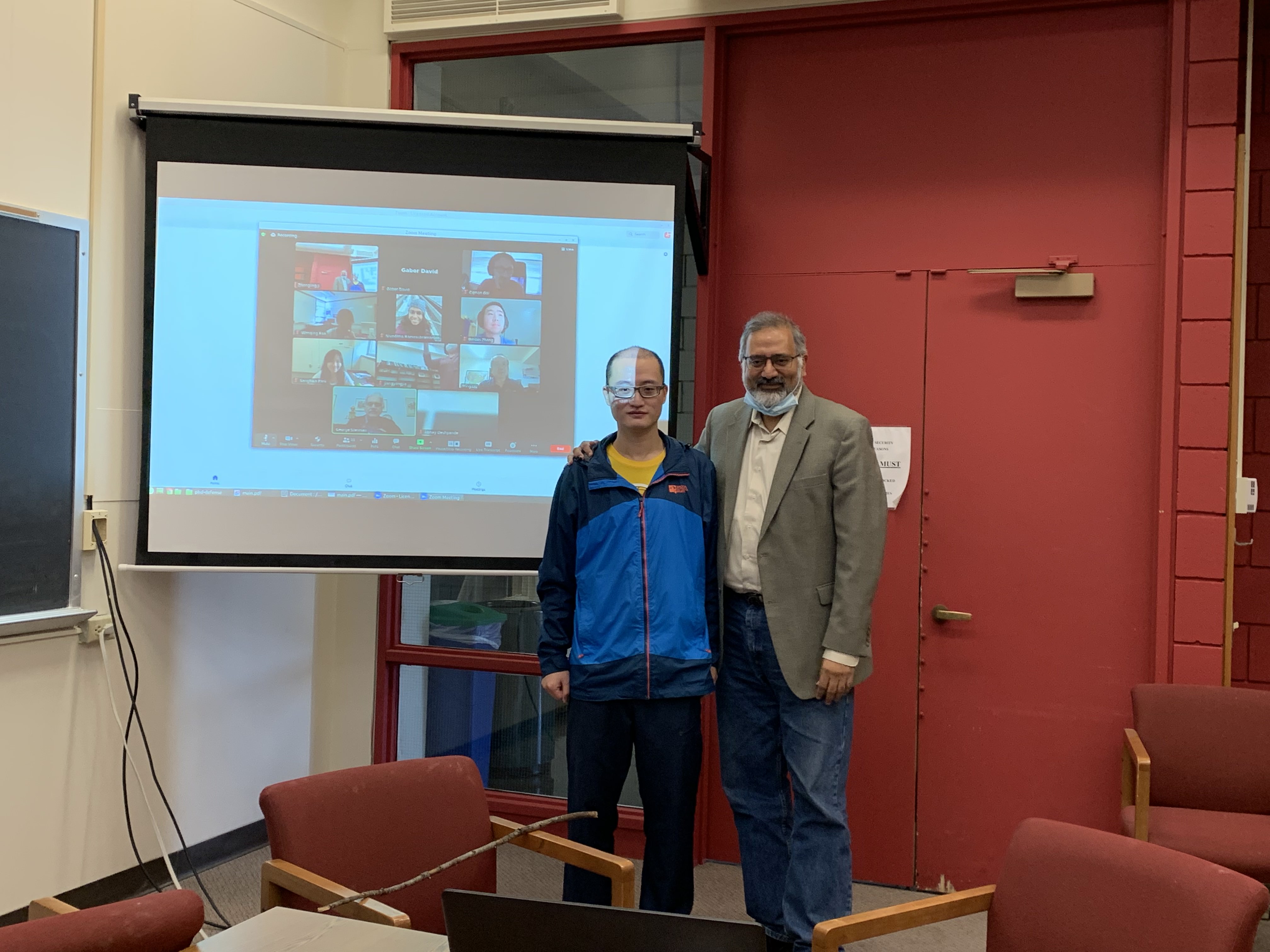Proton "Spin Crisis" Solved at BNL's RHIC
Former department graduate student Zhongling Ji, advised by Dr. Deshpande, was fundamental
in this resolution. Measurements at the Relativistic Heavy Ion Collider (RHIC) at
Brookhaven National Laboratory (BNL) carried out by Dr. Ji were the key to solving
this "crisis."
The problem of how much a proton's quarks contribute to its spin has been around since
1987. At that time, experiments at CERN found that the spin of the proton's internal quarks couldn't account for the full
spin of the proton itself -- igniting the so-called "spin crisis."
 Zhongling Ji (left) and Abhay Deshpande (right) at Dr. Ji's thesis defense.
Zhongling Ji (left) and Abhay Deshpande (right) at Dr. Ji's thesis defense.
To find the missing spin, researchers began looking at the photons produced by interactions between quarks and gluons in proton collisions.
"...one of the major obstacles in this analysis is effectively removing the considerable
background of photons that come from the decay of other particles produced in RHIC's
collisions,"
-- Zhongling Ji
The data from 2013 analyzed for the paper corresponds to about 5.4 trillion proton-proton collisions. Researchers relied on dedicated simulations to determine frequencies of photon creations from other sources to remove them from the data in a systematic way, leaving behind only events relevant to the problem at hand.
The paper, published in PRL, may be found here. A press release from BNL about the discovery may be read here, and one from Stony Brook University may be read here.
